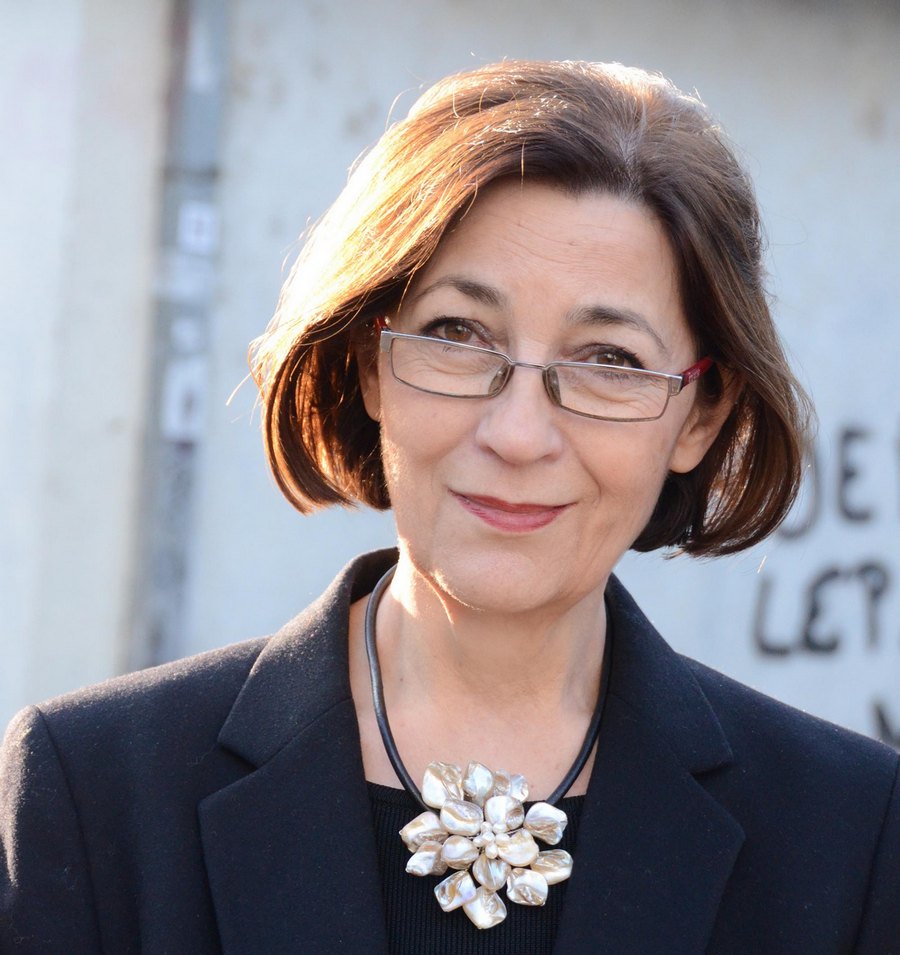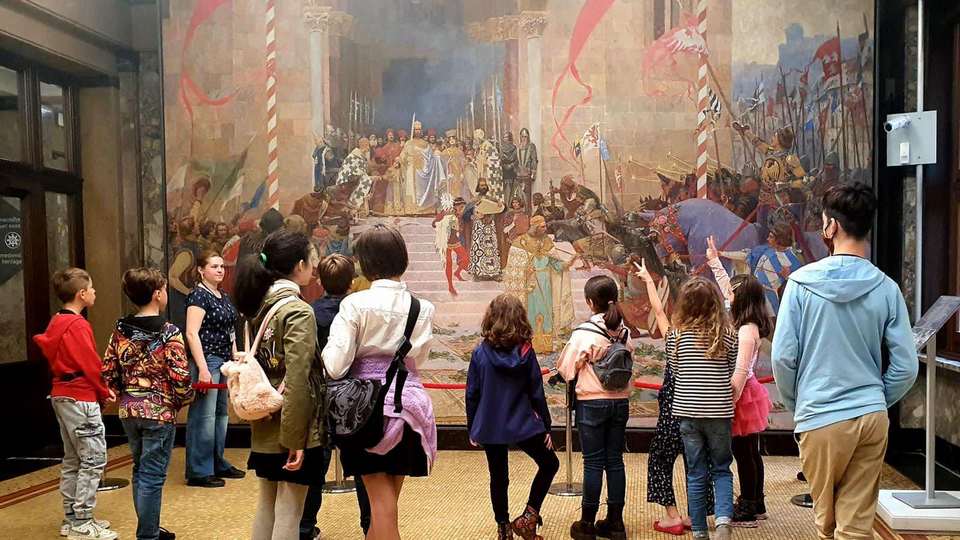Preserving the Country’s Rich Cultural Heritage and History

The National Museum is one of the most important cultural institutions in Serbia, which houses an impressive collection of over 400,000 works of art, archaeological objects and other artefacts that depict Serbia’s abundant history. In this interview, Bojana Borić Brešković, director of the National Museum, talks about the Museum’s history, mission, the challenges it faces and its plans.
After being closed for a number of years, the renovated National Museum was opened in June 2018. What challenges did the Museum’s opening pose and what projects are you the proudest of so far?
The museum and all my colleagues faced numerous challenges, bearing in mind the complex and demanding undertaking of the thorough renovation of the National Museum. People in Serbia had very high expectations and our task was to welcome them to a museum that in every way meets the top museological standards and the needs of modern man. Based on the reactions of people who visited us, I would say that we responded brilliantly to the needs of our visitors. In addition to the permanent exhibition, modern museums include a multitude of accompanying programmes and activities specially created for target groups. I am extremely proud to say that our museum offers content for all ages and tastes and for everybody who enjoys learning and like being entertained. I am also very proud of our curators who, by studiously processing, exhibiting and publishing cultural artefacts from museum collections, help us to learn something new about our cultural heritage every day. I am equally proud of the restorers and conservators who made sure that our cultural heritage has longevity and captivates us with its beauty and exceptionality. I am proud of all my colleagues, without their knowledge, skills and effort there would not be a single museum project in existence.
On the eve of Statehood Day, a central exhibition was staged marking the 150th birthday of our famous painter Nadežda Petrović. What makes this exhibition stand out and what can visitors see and learn about our great artist?
The National Museum of Serbia traditionally celebrates the Republic of Serbia’s Statehood Day by staging a special exhibition every year. This year, we opened the exhibition titled “Modernity and the Nation” dedicated to our great artist, Nadežda Petrović, marking the 150th anniversary of her birth. We aimed to present Nadežda Petrović’s creativity completely and comprehensively, in addition to the artwork that the National Museum has inherited, the artwork from the Museum of Contemporary Art in Belgrade, the Nadežda Petrović Art Gallery in Čačak, the Pavle Beljanski Memorial Collection and the Matica Srpska Gallery from Novi Sad were also exhibited. Apart from the extraordinary paintings, which laid the foundation for Serbian modern painting, visitors have the opportunity to find out about Nadežda in her capacity as the first Serbian woman photographer.
Bearing in mind that our famous painter developed a unique approach to painting and formed an authentic artistic expression, the exhibition was created to reflect the leading themes and motifs indistinguishable from the context of her painting. Starting with her Munich period, paintings of the country and the people, the impressionist episode and the national narrative of the artwork created in Paris, which Nadežda became famous for in the world of modern painting by promoting the visual over the ideological, the exhibition, depicting seemingly conflicting phenomena, demonstrates how modernist postulates coexist in the thematic guise of the national and statehood context.
The beauty and uniqueness of this exhibition lie in its breadth and vividness, as well as the fact that it is the result of lively inter-institutional cooperation.
The National Museum has had a significant number of domestic and foreign visitors. How many people visited the museum last year? How do foreigners react to it and what do museum visitors like the most?
A substantial number of people visit the Museum every year and we hope that the trend of a growing number of visitors to cultural institutions, which was briefly interrupted by the pandemic, will continue. 112,885 people saw the National Museum’s permanent exhibition last year and we are confident that the number of visitors this year will be significantly higher. Their impressions are quite diverse, but I like hearing from our visitors about their impressions or reading what they wrote in the impressions book. Quite a few of them said that they felt proud during their visit to the museum. This means that we are doing our job properly, while continuously reminding the public that we should preserve the Museum and continue presenting the cultural heritage that belongs to all of us in the best and most professional way. Foreign visitors who often don’t have enough information and knowledge about our cultural heritage usually leave the Museum completely enchanted.
112,885 people saw the National Museum’s permanent exhibition last year
This year, you plan to restore the Ljubica Luković Legacy in Ljubomira Stojanovića Street, in the Professor’s Colony. How important is this project and what else does the National Museum plan for 2023?
The implementation of this project is extremely important for us. We tried to implement it earlier, but the confluence of circumstances was such that the project will start in the year of the great jubilee.
In terms of projects related to the restoration of museum buildings, we are trying to finalize them one by one systematically and rationally. After the renovation of the Vuk and Dositej Museum, we renovated and adapted the National Museum central building, and now we are facing the renovation of the Memorial Museum of Nadežda and Rastko Petrović and the Gallery of Frescoes.
We are confident that, once we finish these projects, Belgrade’s cultural offer will be richer for two exceptional cultural institutions.

National Museum Day is celebrated every year on May 10. What can we expect to see this year, on the 179th anniversary of the Museum’s inception?
This year, we will celebrate National Museum Day with a very interesting exhibition. For this occasion, we decided to show a particularly interesting selection of works from the collection of Serbian 18th and 19th-century paintings. Thanks to the exhibition put together by museum adviser Petar Petrović, visitors will see rare or never before exhibited the artwork of eminent Serbian artists and learn more about the ways museum collections are formed and museum collections that reflect a certain moment in time in their own way.
International cooperation is an important segment in the operations of every cultural institution. Which museums do you cooperate with and to what extent is our most important national cultural institution recognized in the European cultural space today?
The National Museum has excellent cooperation with foreign museums. Most often, these are cooperations relating to staging exhibitions, which require the artwork from our collections to be completed. At the moment, we are arranging and putting together the required paperwork to loan some of our exhibits to the Metropolitan. Also, some of our archaeological heritage is presented in the Field Museum. Apart from cooperating on exhibitions, we strive to foster inter-institutional cooperation, thanks to which we contribute to building the capacities of museum experts. The National Museum of Serbia is known and recognized for taking care of exceptional cultural heritage and therefore represents a referential institution on the cultural map of Europe and the world.
What is the cooperation between the National Museum and educational institutions in Serbia like? Do our students have the opportunity to participate in education and museum programs?
One of our basic missions is to educate and generate interest in cultural heritage and its values.
For this reason, colleagues from the Visitors Department invest a lot of effort and knowledge to present this mission as thoroughly as possible. They develop numerous programmes intended for elementary and high school students who often and gladly visit us. Furthermore, our colleagues have also created a programme called the National Museum in Class, thanks to which we participate in classes and add museum-related stories to the curriculum.
In addition to elementary and high school students, we are strongly focusing on the members of the National Museum Children’s Club for whom we have put together guided weekly tours and workshops.
By digitizing and thus preserving and protecting museum artefacts, we have created a wide base of digital content
You used the COVID-19 pandemic, which at one point closed the museum, to present your collections via virtual exhibitions, which was another way to popularize our heritage. How much do you do to present our culture and art on social media, which today are considered important promotion tools?
The transition to the digital world has been going on for many years. By digitizing and thus preserving and protecting museum artefacts, we have created a wide base of digital content, thanks to which we can generate content for social media. While staying true to ourselves and our expressing, we are focusing on finding adequate channels and ways of communication both with our visitors and with those who have not been or never will be visitors but are interested in museum stories in their own way. I have the impression that in the digital world, we communicate just as well with followers as we do with museum visitors.
The secret of good communication in the digital world lies in the fact that we do not perceive social media as a bulletin board and promotional tool, but as a new space for communication with everyone who views cultural heritage as their own.